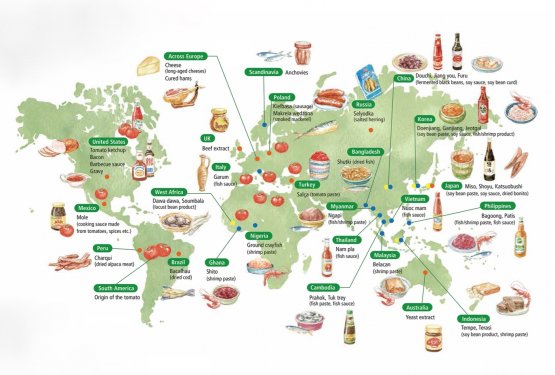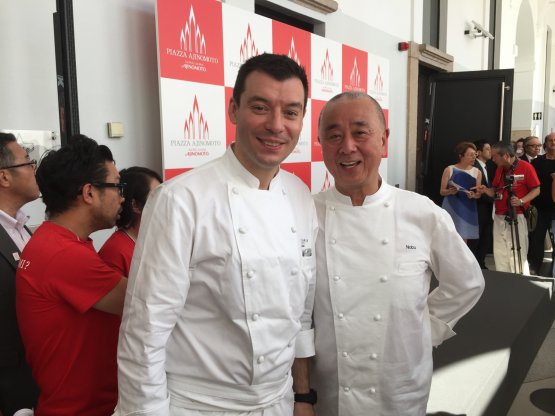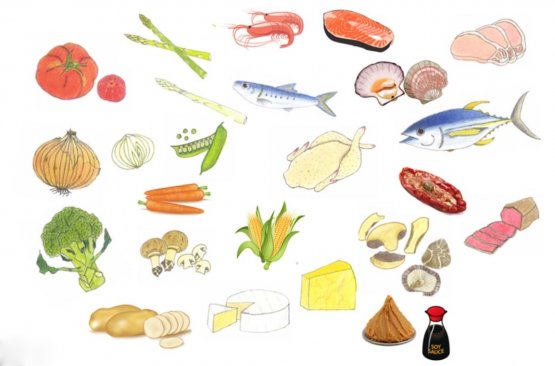Yoshihiro Murata, of the famous Kikunoi in Kyoto tells of how he met umami in a sort of matambre he tasted in the Amazon forest. Laura Santtini, of restaurant Santini in London adds it can also be found in English marmite. Kumiko Ninomiya, director of the Japanese Umami Information Center, underlines how it abounded in ancient Romans’ garum.
Luca Fantin of Bulgari in Tokyo evokes its presence in some childhood meals: «My memories as a child are dense with umami. Cooked ham, pastina with parmesan, meat tortellini: it’s the taste of memories», besides, even maternal milk is very rich in it. It is evoked in the work of Rene Redzepi on dried reindeer legs or in that of Davide Scabin, with his dehydrated aubergine parmigianaand lasagne designed for astronauts, rich in umami and thus poor in salt. Nobuyuki Matsushisa, founder of Nobu, sums up: «The concept of umami needs to be conveyed to all the world» because it doesn’t (wouldn’t?) have borders in space or time.

Food rich in umami, around the world and across history
Umami, we were saying. The fifth flavour, a matter of discussion and still a dilemma outside of Japan. Argentinian
Mauro Colagreco: «I don’t think this is something that the Japanese have conveyed to the rest of the world. I’d rather think the West was not aware of such a flavour».
This awareness was also lacking in the Land of the Rising Sun until the early 20th century. One day Kikunae Ikeda, a chemistry professor in the Imperial University of Tokyo, was dining when he stopped. He thought his cucumber soup was more delicious than usual. In the end he realised that that particular flavour derived from dashi, a filtered broth, made by boiling kombu with katsuobushi flakes.

Luca Fantin with Nobuyuki Matsuhisa
sensed that the secret was indeed in the
kombu: in 1907 he had 38 kg of those dried seaweeds cooked and using the resulting liquid he extracted 30 grams of what today is called monosodium glutamate, one of the 23 natural amino acids that constitute proteins. It is the most common one in nature: the food that has the highest quantity is parmesan, which has 1.2 grams per 100 grams.
This and more was discussed a few weeks ago in Milan during an “Umami Summit” organised by the Umami Information Center and Ajinomoto, a food giant producing one third of the total global monosodium glutamate.

A review of the ingredients that are richest in umami
This is how
Stefania Viti outlined the characteristics of the fifth flavour: it can be found in lots of food, such as tomatoes, fermented food, cured meat, cheese; it spreads around the entire palate, it is persistent and increases salivation. According to researcher
Gabriella Morini, of the
Università degli studi di scienze gastronomiche in Pollenzo, «it is one of the main elements that makes food pleasant»
Indeed, umami enhances the natural salinity in food; this is why it allows reducing the use of salt and it is therefore “healthy” (sick people are given broth…); according to some, it will therefore be the keystone helping developed countries to get free from obesity, because by fortifying this flavour you can also stimulate satiety. According to others, the massive food industry’s massive use of glutamate, is simply to exploit its pleasant qualities.